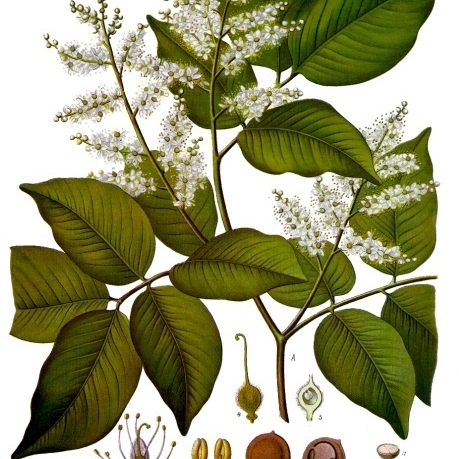Trees. Leaves imparipinnate, petiolate. Stipules caducous. Leaflets alternate, petiolulate. Inflorescences axillary, paniculate; bracts and bracteoles small, caducous. Flowers bisexual, actinomorphic, pedicelled. Hypanthium unknown. Calyx lobes 4, narrowly imbricate or subvalvate. Petals unknown. Disk unknown. Stamens 10, free; anthers dorsifixed. Ovary stipitate, 2-ovuled; style slender; stigma small, capitellate. Pods ellipsoid, rather smooth, 2-valved, valves thick coriaceous, 1-or 2-seeded. Seeds oblong, arillate, exalbuminous.
Leaves simply pinnate; leaflets opposite or alternate, shortly to conspicuously petiolulate, with a conspicuous marginal nerve, often with pellucid gland dots; stipules small, falling very early.
Inflorescences of groups of spikes, or panicles, condensed when young; flowers distichous on the inflorescence axis; bracts small, caducous; bracteoles 2, small, caducous, not enclosing the bud.
Stamens usually 10 but sometimes 8; filaments alternately long and short in the bud; anthers dorsifixed, dehiscing by longitudinal slits.
Ovary stipitate or sessile; ovules usually 2; style elongated, filiform; stigma terminal.
Pods suborbicular or obliquely elliptic, generally coriaceous and very tardily dehiscent.
Seeds 1(2), without areole, usually with a variously developed fleshy aril.
Calyx lobes 4, almost valvate but with the margins slightly imbricate.
Unarmed evergreen trees or occasionally shrubs or subshrubs.
Hypanthium absent.
Petals absent.

